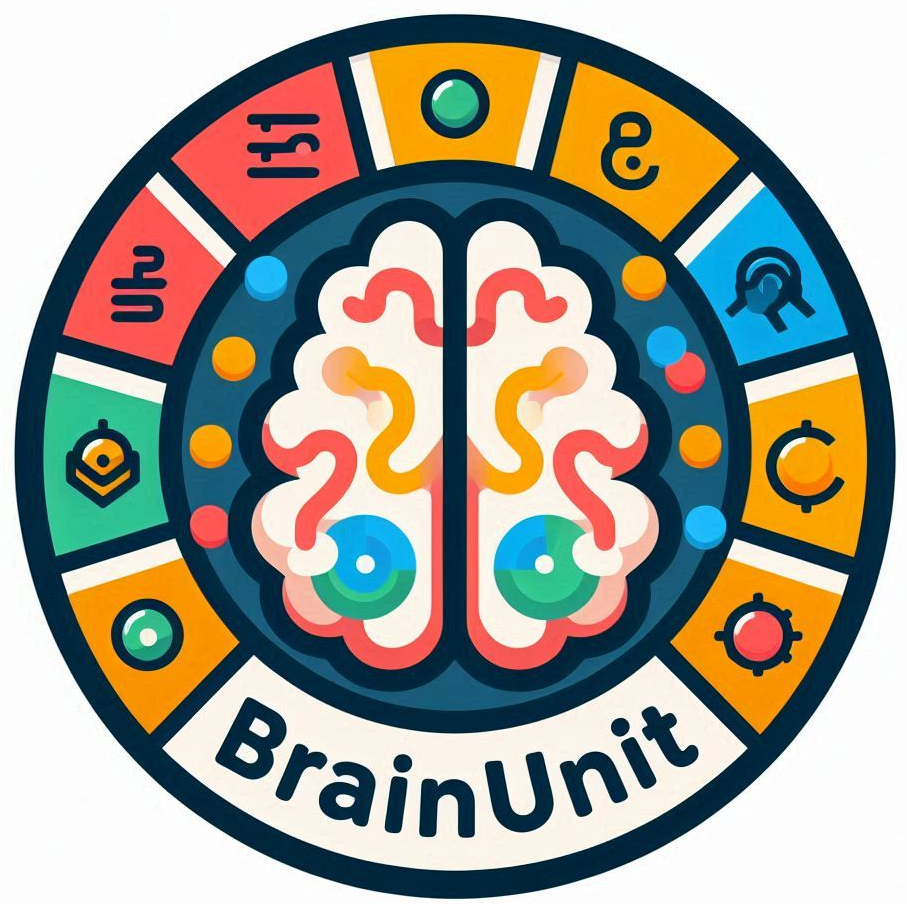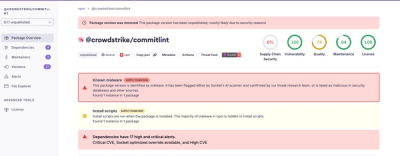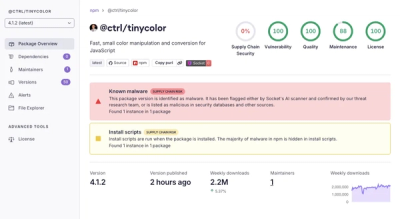BrainUnit
Physical units and unit-aware math system for general-purpose brain dynamics modeling






BrainUnit provides physical units and unit-aware mathematical system in JAX for brain dynamics modeling. It introduces rigoirous physical units into high-performance AI-driven abstract numerical computing.
BrainUnit is initially designed to enable unit-aware computations in brain dynamics modeling (see our BDP ecosystem). However, its features and capacities can be applied to general domains in scientific computing and AI4Science. Starting in 2025/02, BrainUnit has been fully integrated into SAIUnit (the Unit system for Scientific AI).
Functionalities are the same for both brainunit and saiunit, and their functions and data structures are interoperable, sharing the same set of APIs, and eliminating any potential conflicts. This meas that
import brainunit as u
equals to
import saiunit as u
For users primarily engaged in general scientific computing, saiunit is likely the preferred choice. However, for those focused on brain modeling, we recommend brainunit, as it is more closely aligned with our specialized brain dynamics programming ecosystem.
Documentation
The official documentation of BrainUnit is hosted on Read the Docs: https://brainunit.readthedocs.io
Features
brainunit can be seamlessly integrated into every aspect of our brain dynamics programming ecosystem, such as, the checkpointing of braintools, the event-driven operators in brainevent, the state-based JIT compilation in brainstate, online learning rules in brainscale, or event more.
A quick example for this kind of integration:
import braintools
import brainevent
import brainstate
import brainunit as u
class EINet(brainstate.nn.Module):
def __init__(self):
super().__init__()
self.n_exc = 3200
self.n_inh = 800
self.num = self.n_exc + self.n_inh
self.N = brainstate.nn.LIFRef(
self.num, V_rest=-60. * u.mV, V_th=-50. * u.mV, V_reset=-60. * u.mV,
tau=20. * u.ms, tau_ref=5. * u.ms,
V_initializer=brainstate.init.Normal(-55., 2., unit=u.mV)
)
self.E = brainstate.nn.AlignPostProj(
comm=brainstate.nn.EventFixedProb(self.n_exc, self.num, 0.02, 0.6 * u.mS),
syn=brainstate.nn.Expon.desc(self.num, tau=5. * u.ms),
out=brainstate.nn.COBA.desc(E=0. * u.mV),
post=self.N
)
self.I = brainstate.nn.AlignPostProj(
comm=brainstate.nn.EventFixedProb(self.n_inh, self.num, 0.02, 6.7 * u.mS),
syn=brainstate.nn.Expon.desc(self.num, tau=10. * u.ms),
out=brainstate.nn.COBA.desc(E=-80. * u.mV),
post=self.N
)
def update(self, t, inp):
with brainstate.environ.context(t=t):
spk = self.N.get_spike() != 0.
self.E(spk[:self.n_exc])
self.I(spk[self.n_exc:])
self.N(inp)
return self.N.get_spike()
def save_checkpoint(self):
braintools.file.msgpack_save('states.msgpack', self.states())
Installation
You can install brainunit via pip:
pip install brainunit --upgrade
Citation
If you use brainunit in your research, please consider citing the following paper:
@article{wang2025integrating,
title={Integrating physical units into high-performance AI-driven scientific computing},
author={Wang, Chaoming and He, Sichao and Luo, Shouwei and Huan, Yuxiang and Wu, Si},
journal={Nature Communications},
volume={16},
number={1},
pages={3609},
year={2025},
publisher={Nature Publishing Group UK London},
url={https://doi.org/10.1038/s41467-025-58626-4}
}
See also the BDP ecosystem
We are building the brain dynamics programming (BDP) ecosystem. brainunit has been deeply integrated into our BDP ecosystem.







